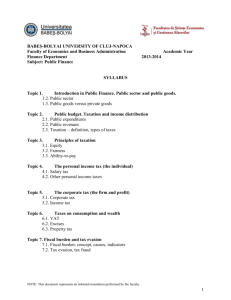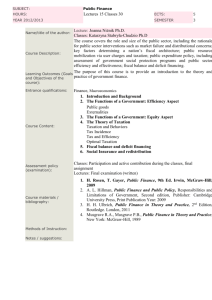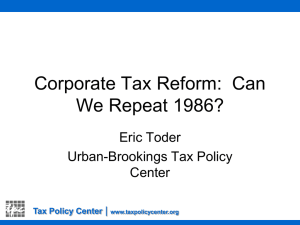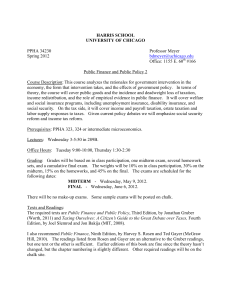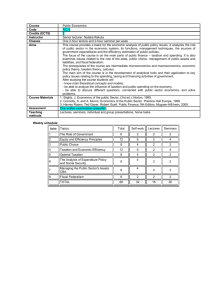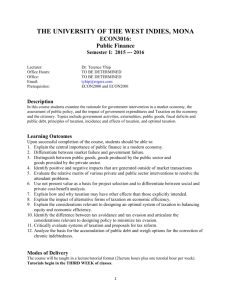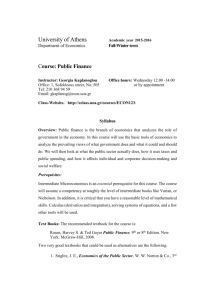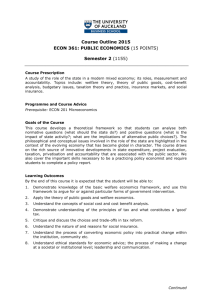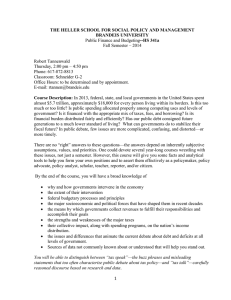SE1601
advertisement
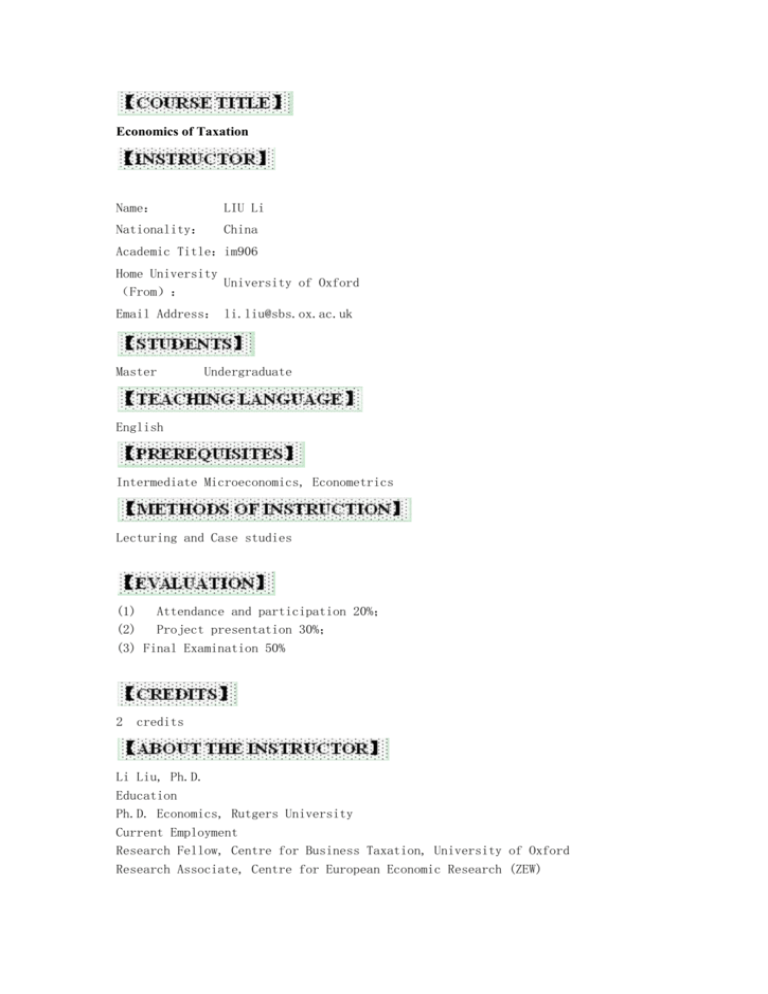
Economics of Taxation Name: LIU Li Nationality: China Academic Title:im906 Home University University of Oxford (From): Email Address: li.liu@sbs.ox.ac.uk Master Undergraduate English Intermediate Microeconomics, Econometrics Lecturing and Case studies (1) Attendance and participation 20%; (2) Project presentation 30%; (3) Final Examination 50% 2 credits Li Liu, Ph.D. Education Ph.D. Economics, Rutgers University Current Employment Research Fellow, Centre for Business Taxation, University of Oxford Research Associate, Centre for European Economic Research (ZEW) Academic Fields Public Economics, Corporate Tax Policy, Applied Microeconometrics This course is an upper-level Economics elective. The objective is to provide students with a conceptual framework for examining government taxation of economic activities and to use this framework to analyze current tax policy and proposals for reform. The focus will be on evaluating the impact of taxation on the allocation of resources and the distribution of income. Students will become familiar with the current tax system in the U.S. and in China and the economic models important to the evaluation of tax policy questions. Students will learn the following in this course: • How taxes affect the income distribution • How taxes affect economic activity of individuals and firms • How to measure the efficiency cost of taxation • The difference between income, consumption and wealth taxes • How to evaluate tax reform alternatives • The structure of the individual and corporate tax systems in the United States and in China 1. Introduction to Taxation Rosanne Altshuler and Roberton Williams, “Five Myths about Your Taxes” (http://www.taxpolicycenter.org/publications/url.cfm?ID=901335) Tax Panel Report, Introduction, Chapters 1, 2 and 3 (http://govinfo.library.unt.edu/taxreformpanel/final-report/TaxPanel_1_11-1.pdf) 2. Tools of Normative Analysis Rosen and Gayer, chapter 3 3. Taxation and Income Distribution Rosen and Gayer, chapter 14 Rachel Johnson and Jeffrey Rohaly, “The Distribution of Federal Taxes, 2009-12” (http://www.taxpolicycenter.org/publications/url.cfm?ID=411943) 4. Taxation and Efficiency Rosen and Gayer, chapter 15 5. Efficient and Equitable Taxation Rosen and Gayer, chapter 16 6. The Personal Income Tax Rosen and Gayer, chapter 17 Tax Panel Report, chapter 4 Carol Rosenberg, “AMT Coverage by State, 2007” (http://www.taxpolicycenter.org/UploadedPDF/1001299_AMT_07.pdf) Katherine Lim and Jeffrey Rohaly, “The Individual Alternative Minimum Tax: Historical Data and Projections” (http://www.taxpolicycenter.org/UploadedPDF/411968_AMT_update.pdf) Roberton Williams, “Who Pays No Income Tax?” (http://www.taxpolicycenter.org/UploadedPDF/1001289_who_pays.pdf) Roberton Williams, “Why Nearly Half of Americans Pay No Federal Income Tax” (http://www.taxpolicycenter.org/UploadedPDF/412106_federal_income_tax.pdf) 7. The Effect of Taxation on Individual Behavior Rosen and Gayer, chapter 18 Rosanne Altshuler and Jacob Goldin, “The Opacity of Marginal Tax Rates” (http://www.taxpolicycenter.org/UploadedPDF/1001336_opacity.pdf) 8. Corporate Taxation Rosen and Gayer, chapter 19 9. Tax Reform Rosen and Gayer, chapter 21 Tax Panel Report, chapters 4 and 5 Lily Batchelder and Eric Toder, “Government Spending Undercover: Spending Programs Administered by the IRS” (http://www.taxpolicycenter.org/UploadedPDF/1001365_undercover_spending.pdf) William Gale and Ben Harris, “A Value-Added Tax for the United States: Part of the Solution” (http://www.taxpolicycenter.org/UploadedPDF/1001418_VAT_solution.pdf) [1] Public Finance, by Harvey Rosen and Ted Gayer, (9th edition, 2010) n
